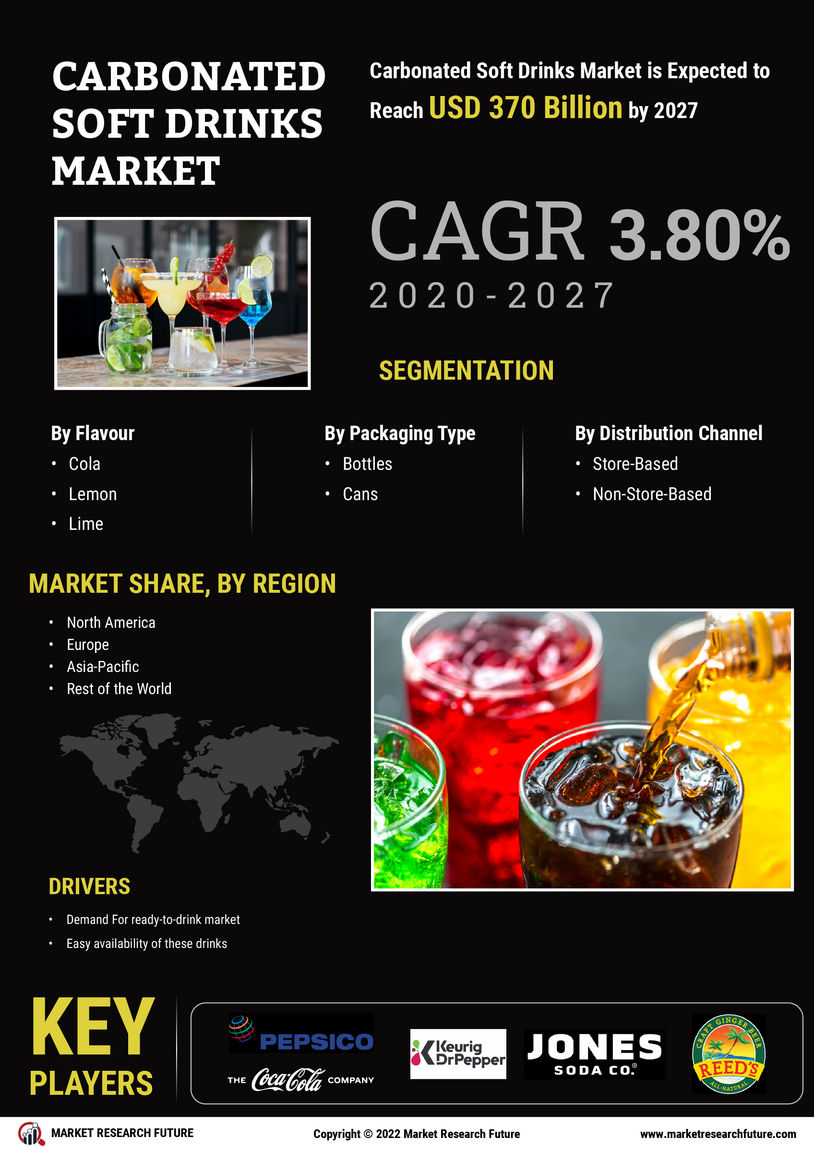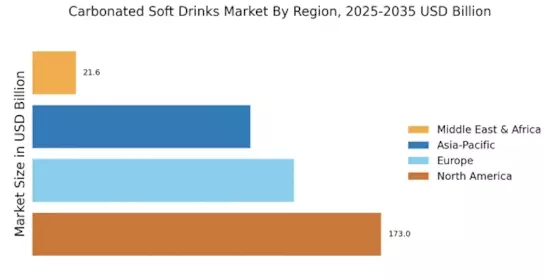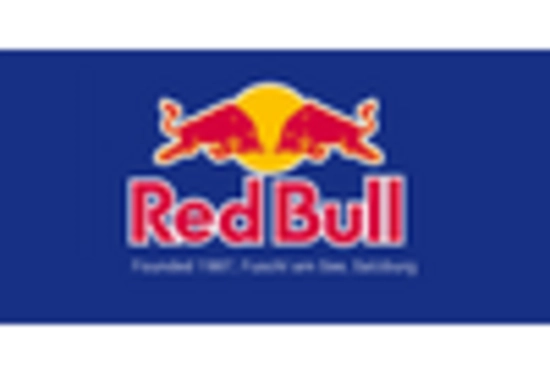Diverse Flavor Profiles
The Carbonated Soft Drinks Market is characterized by an increasing demand for diverse flavor profiles. Consumers are no longer satisfied with traditional cola flavors; they are actively seeking unique and exotic taste experiences. This trend has led to the introduction of innovative flavors, such as tropical fruits, herbal infusions, and even savory options. Market data suggests that the introduction of new flavors has contributed to a 7% increase in sales within the industry over the past year. Brands are leveraging this trend by launching limited-edition flavors and seasonal offerings to attract adventurous consumers. This strategy not only enhances brand loyalty but also encourages trial among new customers. As the market continues to evolve, the emphasis on flavor innovation is likely to remain a key driver in the Carbonated Soft Drinks Market, pushing companies to explore unconventional combinations and cater to diverse palates.
Health and Wellness Trends
The Carbonated Soft Drinks Market is witnessing a growing influence of health and wellness trends among consumers. As awareness of health issues rises, many individuals are seeking alternatives to traditional sugary beverages. This shift has led to an increase in demand for low-calorie, sugar-free, and functional carbonated drinks. Market analysis indicates that the segment of health-oriented carbonated beverages has expanded by approximately 10% in recent years. Brands are responding by reformulating existing products and introducing new lines that cater to health-conscious consumers. This trend not only addresses consumer concerns but also opens new avenues for growth within the Carbonated Soft Drinks Market. Companies that prioritize health and wellness in their product offerings are likely to capture a larger share of the market, appealing to a demographic that values both taste and nutritional benefits.
Convenience and On-the-Go Consumption
The Carbonated Soft Drinks Market is experiencing a notable shift towards convenience and on-the-go consumption. As lifestyles become increasingly fast-paced, consumers are seeking products that fit seamlessly into their daily routines. This trend is reflected in the rising demand for single-serve packaging and ready-to-drink options. According to recent data, the convenience segment has shown a growth rate of approximately 5% annually, indicating a strong preference for easily accessible beverages. Retailers are responding by expanding their offerings in convenience stores and vending machines, making carbonated soft drinks readily available. This shift not only caters to consumer preferences but also enhances brand visibility, thereby driving sales in the Carbonated Soft Drinks Market. As a result, companies are likely to invest in innovative packaging solutions that align with this trend, further solidifying their market presence.
Brand Loyalty and Marketing Strategies
In the Carbonated Soft Drinks Market, brand loyalty plays a crucial role in consumer purchasing decisions. Established brands benefit from a strong emotional connection with their customers, often resulting in repeat purchases. Recent studies indicate that nearly 60% of consumers prefer sticking to familiar brands when selecting carbonated beverages. This loyalty is often reinforced through targeted marketing strategies, including social media campaigns and influencer partnerships. Companies are increasingly investing in brand storytelling to create a compelling narrative that resonates with their audience. Additionally, promotional activities, such as discounts and loyalty programs, further enhance consumer engagement. As competition intensifies, brands that effectively leverage their marketing strategies to foster loyalty are likely to thrive in the Carbonated Soft Drinks Market. This focus on brand loyalty not only drives sales but also cultivates a dedicated customer base that can withstand market fluctuations.
Sustainability and Eco-Friendly Practices
Sustainability has emerged as a pivotal driver in the Carbonated Soft Drinks Market, as consumers increasingly prioritize eco-friendly practices. The demand for sustainable packaging solutions, such as recyclable materials and reduced plastic usage, is on the rise. Recent data indicates that brands adopting sustainable practices have seen a 15% increase in consumer preference. Companies are now investing in innovative technologies to enhance their environmental footprint, including the use of plant-based materials and carbon-neutral production processes. This commitment to sustainability not only aligns with consumer values but also enhances brand reputation. As the market evolves, the emphasis on eco-friendly practices is likely to shape the future of the Carbonated Soft Drinks Market, compelling companies to adopt more responsible approaches to production and distribution.


















Leave a Comment